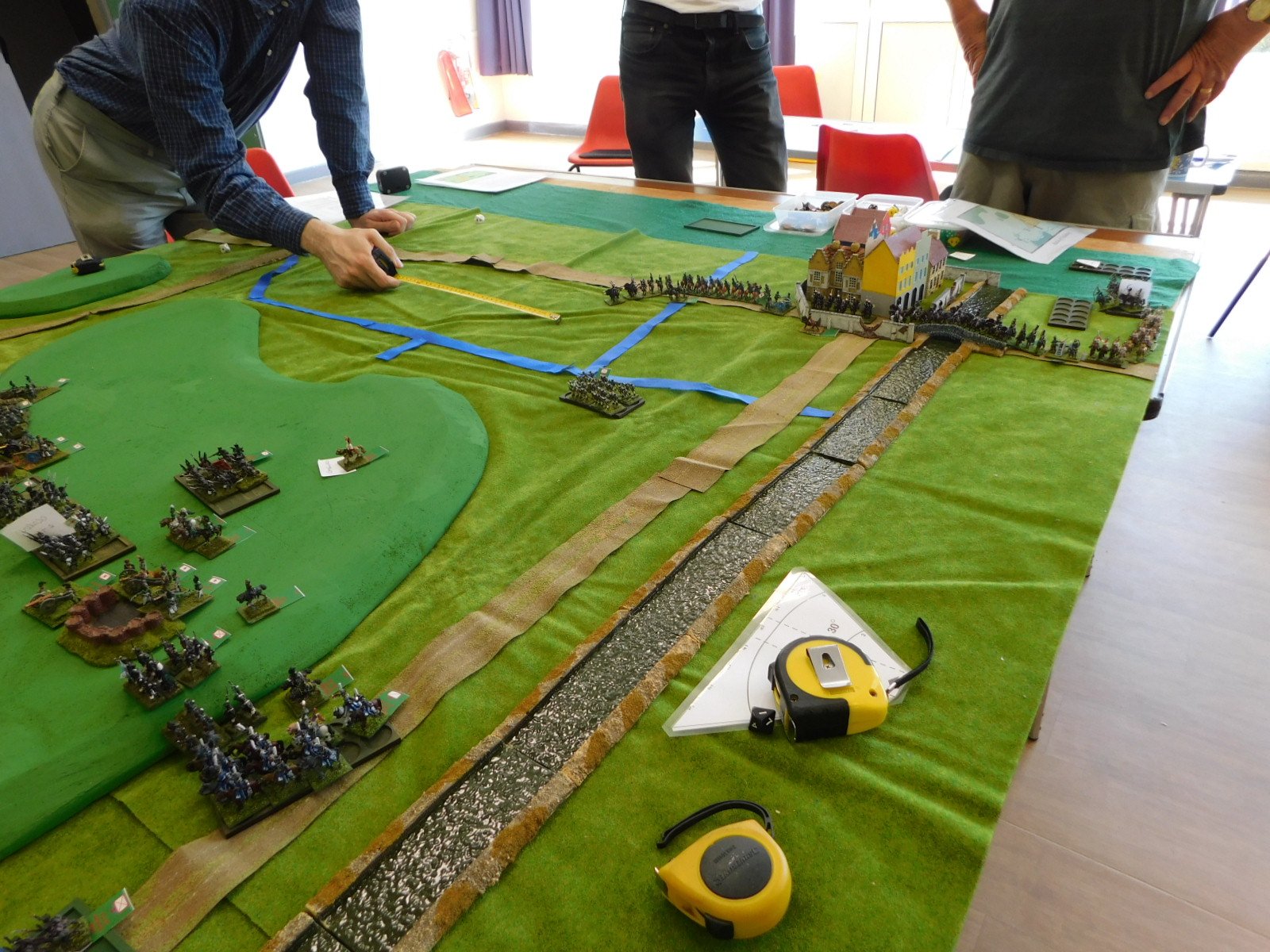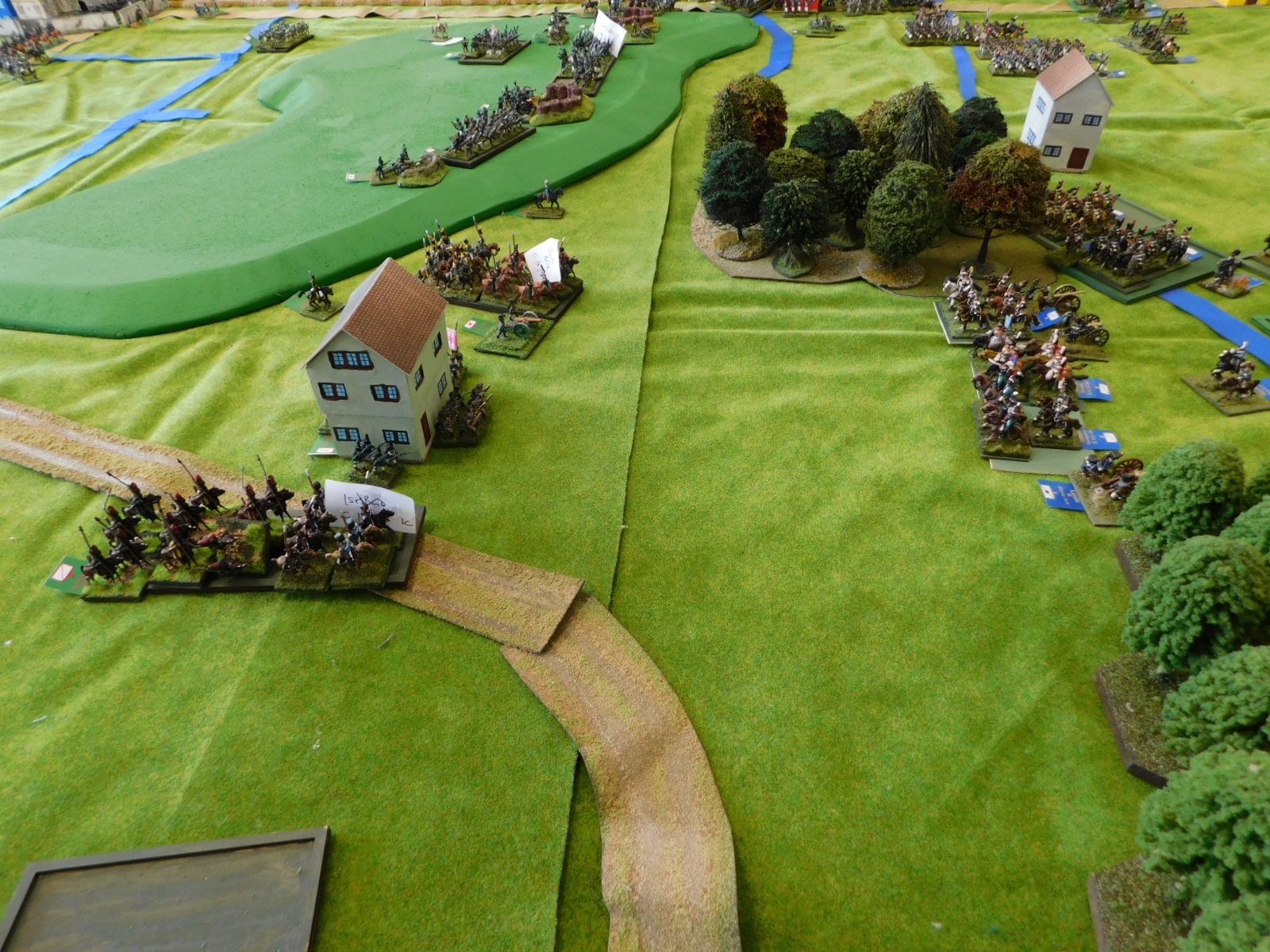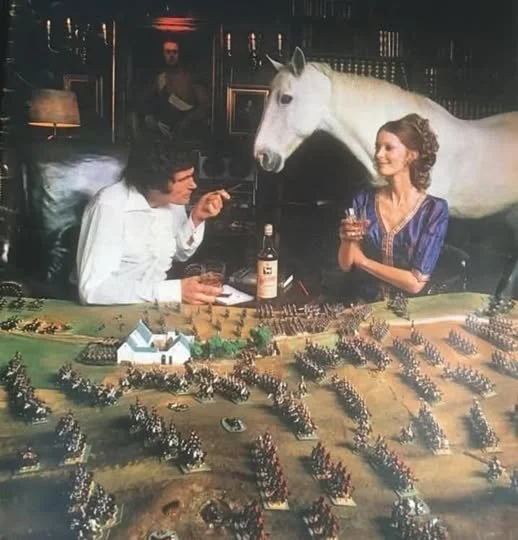AoE AAR: Heilsberg
/A couple of weeks ago it was over to Benson to play in a huge re-fight of the Napoleonic battle of Heilsberg.
From Wikipedia:
On 24 May 1807, the Siege of Danzig ended when Prussian General Friedrich Adolf, Count von Kalckreuth capitulated to French Marshal François Joseph Lefebvre. This gave Napoleon the opportunity to engage the Russian forces led by Levin August von Bennigsen. On 2 June, before Napoleon could act, Bennigsen ordered his columns to converge on Marshal Michel Ney's exposed VI Corps. Outnumbered by 63,000 to 17,000, Ney fought a rear guard action at the Battle of Guttstadt-Deppen on 5 and 6 June. Though he lost his baggage train, two guns, and 2,042 men, Ney managed to escape to the southwest over the Pasłęka (Passarge) River with the bulk of his soldiers.
Within two days, Napoleon had ordered his 190,000-man army to close in on the 100,000 Russians and 15,000 Prussians. Aware of their approach, Bennigsen ordered his troops to fall back on Lidzbark Warmiński ("Heilsberg" in German). The Russian army took up strong defensive positions around the town, which stood on the Łyna (Alle) River. The French army, under Marshals Murat and Lannes, attacked on 10 June. Bennigsen repelled several attacks, resulting in huge French casualties, but had to withdraw towards Friedland the following day. Four days later, the decisive Battle of Friedland occurred, ending the War of the Fourth Coalition with the passing of the Treaty of Tilsit.
And about the battle itself:
The French cavalry under Joachim Murat was selected to lead the frontal attack, but Napoleon did not arrive on the field in person until Murat had already led a disastrous charge. Marshal Mortier and Marshal Davout advanced on the Königsberg side. Soult and Lannes, leading separate cavalry units, and Ney, with the infantry, moved forwards on both sides of the River Łyna. These smaller units proved ineffective, especially when Prussian reinforcements arrived, sent by Anton Wilhelm von L'Estocq at Bennigsen's request. Lannes made an unsuccessful attack which cost the French 3,000 casualties. On the Russian side, Bennigsen was suffering from fever and had difficulty remaining in command.
On 11 June, the substantial casualties on both sides and the success of the Russian defence gave Bennigsen and Napoleon little choice but to call an undocumented truce to end hostilities. The French had lost an estimated 12,000 men. The truce was focused primarily on the recovery of wounded soldiers. The battle ended with medics and soldiers from both sides helping the wounded and retrieving the dead. When Napoleon entered the deserted Russian positions the following day, he found that all except the wounded had been evacuated overnight.
I would play Murat, commander of the French cavalry, with Anon and Mark leading the French infantry. The Russians would be played by Edward and John. We also had two referees (and the architects behind the game): Bevan on the French side and Dave on the Russian side. The rules used were Age of Eagles.
The French cavalry corps, with me as Murat commanding, arrive on the edge of the table. Our objective is the town that you can just see top right.
I knew that historically Murat had just thundered forward and charged up the slope at the waiting Russians. I also knew that that hadn’t worked, so my aim (and orders from our Napoleon) was to head to the left and try and get through the gap in the ridge past the trees with the house in front of them.
I duly headed off in that direction as fast as I could, but my troops quickly got a bit strung out. The Lights were okay, but the Heavies were having none of this fast-moving malarky!
Meanwhile, the Russians pulled back so all their troops were on the ridge and our infantry started to arrive on table.
The Russians were waiting for me with two strong (well, large) units of Cossacks and a battery of guns, so rather than recklessly trying to force the gap with the Lights, I waited until my Heavies actually deigned to arrive.
Meanwhile, the Russians were receiving reinforcements.
Time to earn my spurs! I brought the Heavies up along with my Horse Artillery and thundered through the gap, with the enemy Cossacks counter-charging my advancing cavalry.
I didn’t smash the Cossacks from the table - their large sotnias absorbing a lot of the impetus from my smaller but much better quality units - but definitely pushed them back, allowing me to start to pour through the gap.
Meanwhile, the French infantry was advancing forwards as fast as possible, and fighting had broken out around the village on the Russian left. This benighted place would change hands several times before finally falling to the French.
The Russian reinforcements were still streaming towards the fighting!
As the French infantry continued to pour forward, I kept the pressure up on the Cossacks and the regular cavalry that had begun to arrive to reinforce them.
By now, battle was becoming general across the whole of the front of the ridge.
On my side of the table, my cavalry were now definitely starting to push the Russian horse backwards, even with their reinforcements, and were starting to push forward onto the ridge itself: the flank of the Russian infantry beckoned, and I even managed to overrun a Russian artillery piece in its redoubt.
The French infantry were also getting well stuck in, and the Russians were gradually being pushed back all along their line.
This was not an easy fight, I hasten to add. French casualties were mounting up, and the action was a see-saw backwards and forwards rather than a steady advance from the French. My cavalry were facing a lot of fresh Russian regular horse and I was having to attack in surges: charge and get disordered, hopefully survive enemy actions, re-order and charge in again…but the enemy were definitely starting to crumble under our relentless assault!
What finally broke the Russian horse were a series of flank charges: my smaller units being much more manoeuvrable than his massive columns.
With my cavalry now dominant on the left side of the ridge, and my horse artillery on the way, and the Russian infantry in the centre starting to crumble, it was looking deadly serious for the Russians.
The clock was ticking, however, and we had to end the game there having fought 16 of the 23 turns that the scenario allowed.
So, who had won?
Well the French were definitely winning, and had secured two of their four objectives: the river line in front of the ridge and the ridge itself. They had also inflicted 41% casualties on the Russians whilst taking approximately half that themselves. Admittedly they technically only had seven turns to secure the riverline behind the ridge (that would have been very, very do-able) but taking the town, with its infantry defenders would have been very tough to do indeed within that time limit.
In the end, the referees ruled that extreme Russian casualties would have meant that their army abandoned both the field and the town, giving victory to the French. Huzzah!
It is, however, only fair to mention that the Russians disagreed vehemently with this interpretation of the result: claiming that they would have quite happily holed up in the town and waited for nightfall and the technical end of the action, giving them the victory despite their enormous casualties and loss of 75% of their objectives. I leave it up to you, dear reader, to decide who was right!
I was quite relieved to have done better than my historical counterpart, and was pleased with the way I had forced the Russian right flank.
The Age of Eagles rules give a good, fast-moving game, although I find the fact that you’re always rolling one die for a test or combat rather than two makes things uncomfortably random: there’s no normal distribution with just one die, and the fact that it’s a D10 gives you a nine point variance in result…it’s just that bit too random for me.
My thanks to all involved, but especially to Dave and Bevan who organised and ran the game. Perhaps a last word from one of the Russian commanders…
Really good to see some of you on Saturday, and big thanks for such a fun day and battle. The Russian right flank (which was weakly defended) took a pounding from some very skillfully handled French cavalry…but I think if we'd strengthened the flank from the start, the French infantry would have cleared the central high ground even quicker than they did. Even though we lost, I really enjoyed playing the Russians…an excellent defence over such a long period.






















































































